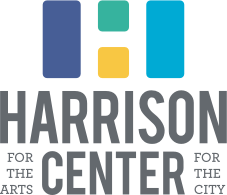#IndiatoIndy
The 48-Hour Residency is a program of the Harrison Center for the Arts that invites artists/musicians to spend 24 hours exploring urban Indy followed by 24 hours creating art or music celebrating the city.
Abhishek Scariya walked through the doors of the City Gallery and into a project that would challenge him—not only to fulfill the requirements of the 48-Hour Residency—but also to continue exploring and relating a theme from Art for Change’s 2015 International Artist Residency: Human Dignity, The Many Faces of Abundance, here in Indianapolis. This international artist residency was held in collaboration with Delhi-based arts organizations Art for Change Foundation, NGO Fusion and Indy’s Harrison Center for the Arts. Abhishek went out exploring our city with a number of old friends (Residency Director Stefan Eicher and Residency Fellow/HCA artist Quincy Owens) as well as some new ones, visiting a diverse array of neighborhoods and people with his camera always in hand. Scariya shared the end results with a number of guests and local artists during a closing discussion at City Gallery and the images were stunning. I wanted to ask a few more questions about his thoughts on Indianapolis, abundance and how they connect internationally. Check out what he had to say:
Having just finished the residency in India, and heading to Indiana for a 48-hour photography residency, how did you connect the two places while keeping the theme of abundance in mind?As I came to Indianapolis (and the US in general), the elements of being in a foreign culture did stand out to me but it didn't take long for me to find similarities. When we talk about abundance in the light of human dignity, I find that the struggles and longings of people are similar. They may be materially/economically different but when we go a few levels deeper, the need and right to keep the dignity and love and respect within communities remains the same. This was especially true when I heard and to an extent visually experienced the issues of cultural displacement and gentrification and its effects among the challenged communities there.
What does abundance mean to you?Abundance for me means leaving behind the underpinnings of reductionism and survival. And when we link abundance with human dignity, it translates to richness and fullness (spiritually, mentally and emotionally) of the whole person. It's a concept which goes far beyond accumulation of wealth and material things.
How does abundance look the same/different in both places?Consumerism and corporate capitalism is on the rise in India at least in the bigger cities; so externally the hunt for satisfaction through material abundance looks quite similar both in India and the US but yet on the other side, the economically deprived in India face a whole new set of challenges as compared to the United States. Then there's also the issue of the caste system which plays into the equation for many of the poorest of the poor. But in spite of the similarities or differences, what strikes me is that the longing for hope and real satisfaction is universal for all cultures and communities.
How do the photos of the children in India and the photos of Indiana connect?When I came to Indianapolis, I was going through a personal time of grief because of certain events in the family and my state of mind naturally flowed into the work I made. Through the portraits of children, I wanted to, in a sense, go one step further from the question of human dignity into the preciousness, beauty and inherent value of every human life. This is what gives us dignity and without inherent preciousness and value, the conversation doesn't even move forward, so to speak. Such an expression of preciousness and beauty and value can be best seen in children. Through these juxtaposed and superimposed portraits, I wanted to bring out questions of commonality between the people of the community in Gazipur Delhi with the struggling communities in Indiana. The common challenges of economic and cultural displacement and also the common hopes and desires for love and dignity and growth. Photo credit: Abhishek Scariya, 2016





